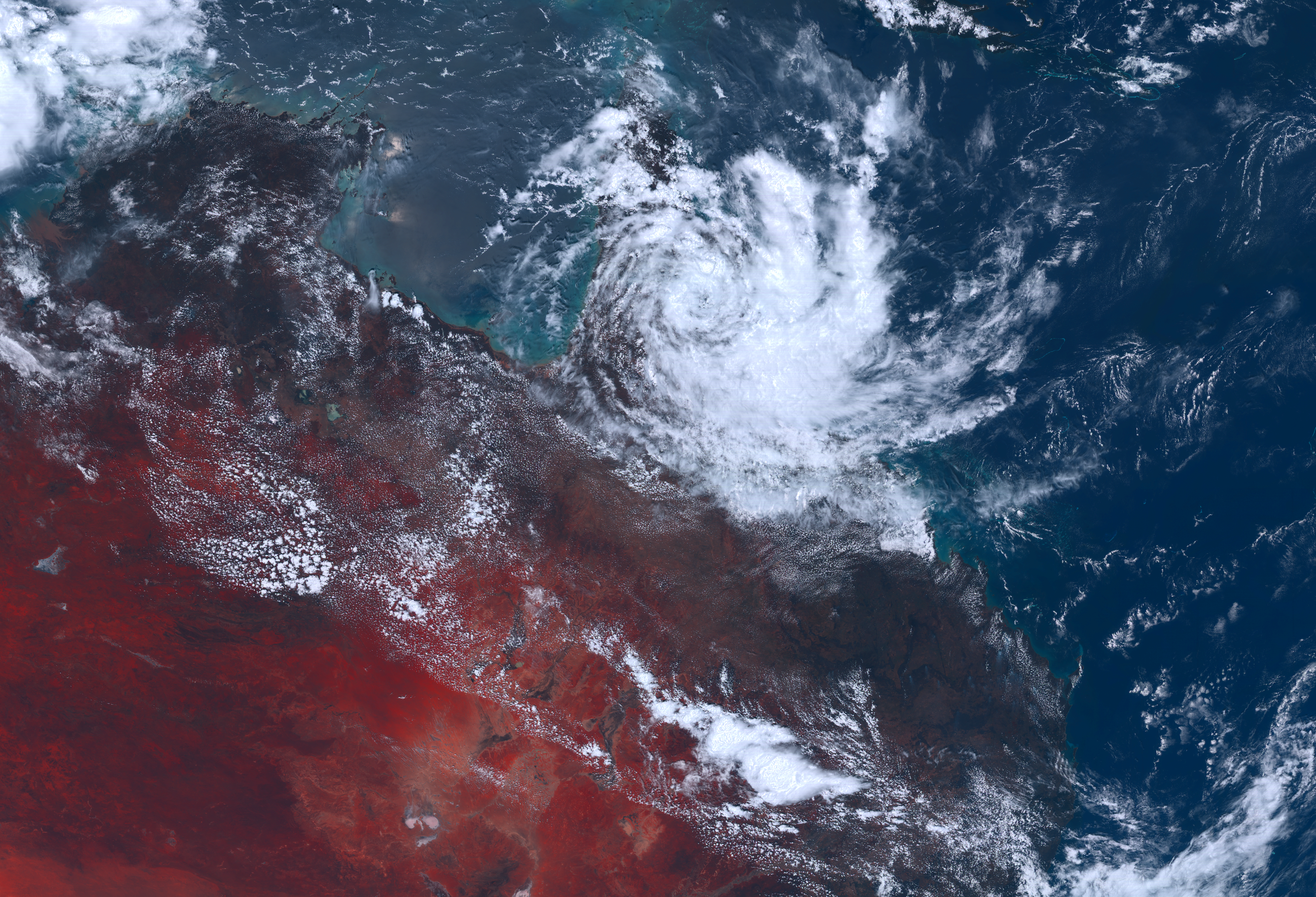News release
From:
Scientists and researchers at the ARC Centre of Excellence for Climate Extremes have today released “The State of Weather and Climate Extremes 2023” report (1,2).
The report and media releases relating to specific events are available on request.
The report analyses key weather and climate extremes from 2023, including:
- The wide-ranging impacts of Cyclone Jasper in Queensland
- The South Australian September heatwave
- Early season bushfires in Queensland
- Extreme winter heat in New South Wales and an early end to the snow season in the Australian Alps
- Compounding rain and wind causing widespread damage in Hobart
- Record low sea ice extent in Antarctica
- Devastating floods in the Northern Territory and northwest Queensland
The report, co-written by more than 30 of Australia’s leading climate scientists, including many of the Centre’s early career researchers, is designed to help decision makers and the general public understand the complexity of climate extremes.
Professor Andy Pitman, Director of the ARC Centre of Excellence for Climate Extremes, said: “Over the last few years we’ve been pulling extremes together into a narrative that provides a one-stop shop of what happened in the year.”
“It’s about packaging the information up in a digestible form to help people understand what’s going on in our environment.”
The report provides a description of each event and its impacts as well as an explanation which reflects scientists’ understanding of the causes.
“What was unusual about 2023 is how intense some of these events were and how they kept pushing records,” Pitman said.
While it’s challenging to determine the cause of specific extreme events, Pitman said that they seemed to be happening with increased frequency in 2023.
“Some of them were occurring one after the other or close to each other. These temporally and spatially compounding events had a substantial impact on our environment and were difficult for us to deal with.”
The influence of climate drivers such as El Niño and the Indian Ocean Dipole as well as the evolution of rainfall and temperature throughout the year were also assessed in the report.
The year began with above-average rainfall in northern Australia progressing to increasingly dry conditions in southern and eastern Australia in late winter and spring, when El Niño was declared.
Against expectations, above average rainfall was observed in December across much of eastern Australia, particularly in Northern Queensland, where residents were impacted by the intense flooding caused by Cyclone Jasper.
“We can easily get the impression that natural climate drivers such as El Niño are the dominant cause of what we observed in 2023 but that’s not true. El Niño does not guarantee that eastern Australia will be hot and dry, rather it influences the probability of hotter and drier conditions,” Pitman said.
Overall, 2023 was the 8th hottest year on record in Australia, with temperatures 0.98°C above the 1961-1990 average. Winter was the warmest on record since observations began in 1910, and September was the driest ever recorded.
Globally, 2023 marked the hottest year on record and a year of extremes. Canada’s wildfire season in June was unprecedented with 18.4 million hectares burnt, and the heatwaves over Europe contributed to many national and global temperature records tumbling in July. The report provides an overview of some international events that took place in 2023.
“There’s plenty of places around the world where events are becoming hard to survive,” Pitman said.
“What scientists bring to the table is more and more evidence of what we already know. We need to act based upon observations and existing knowledge. The actions are straightforward: stop emitting carbon and invest heavily in adaptation.”
As for what will happen in terms of extreme events in 2024, this remains uncertain, Pitman said.
“2024 appears to be leaning towards a weak El Niño or more neutral La Niña conditions. It is likely to be a warm year. However, how extreme events will be expressed regionally over Australia is hard to predict.”
Professor Andy Pitman is available for comment.
The report and media releases relating to specific events are available on request.
Notes to editors:
The report provides a summary of selected significant extreme weather and climate events which occurred across Australia in 2023. The report provides a description of each event and an explanation which reflects our understanding of the causes. The report also provides an overview of selected international events including Antarctica. This document has been prepared to assist policy makers and the general public understand the complexity and nature of the climate extremes we are experiencing.
The ARC Centre of Excellence for Climate Extremes, led by Professor Andy Pitman, represents over one hundred researchers contributing to the science of climate extremes through developing fundamental climate science and improving models to analyse the extremes of the past and predict the extremes of the future. The Centre was established in August 2017 and is funded by the Australian Research Council as a Centre of Excellence with investment from the New South Wales Government’s Research Attraction and Acceleration Program and the New South Wales Department of Planning and Environment. The Centre consists of five partner universities: The University of New South Wales, Monash University, The Australian National University, The University of Melbourne and The University of Tasmania, as well as multiple international partner organisations including the NASA Goddard Space Flight Centre, the Max Planck Institute of Meteorology and the UK Meteorological Office.
Multimedia






 Australia; NSW; VIC; QLD; SA; TAS; NT; ACT
Australia; NSW; VIC; QLD; SA; TAS; NT; ACT


